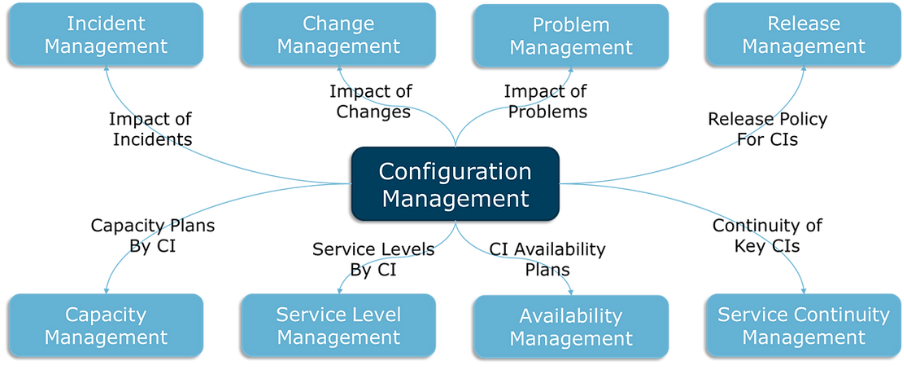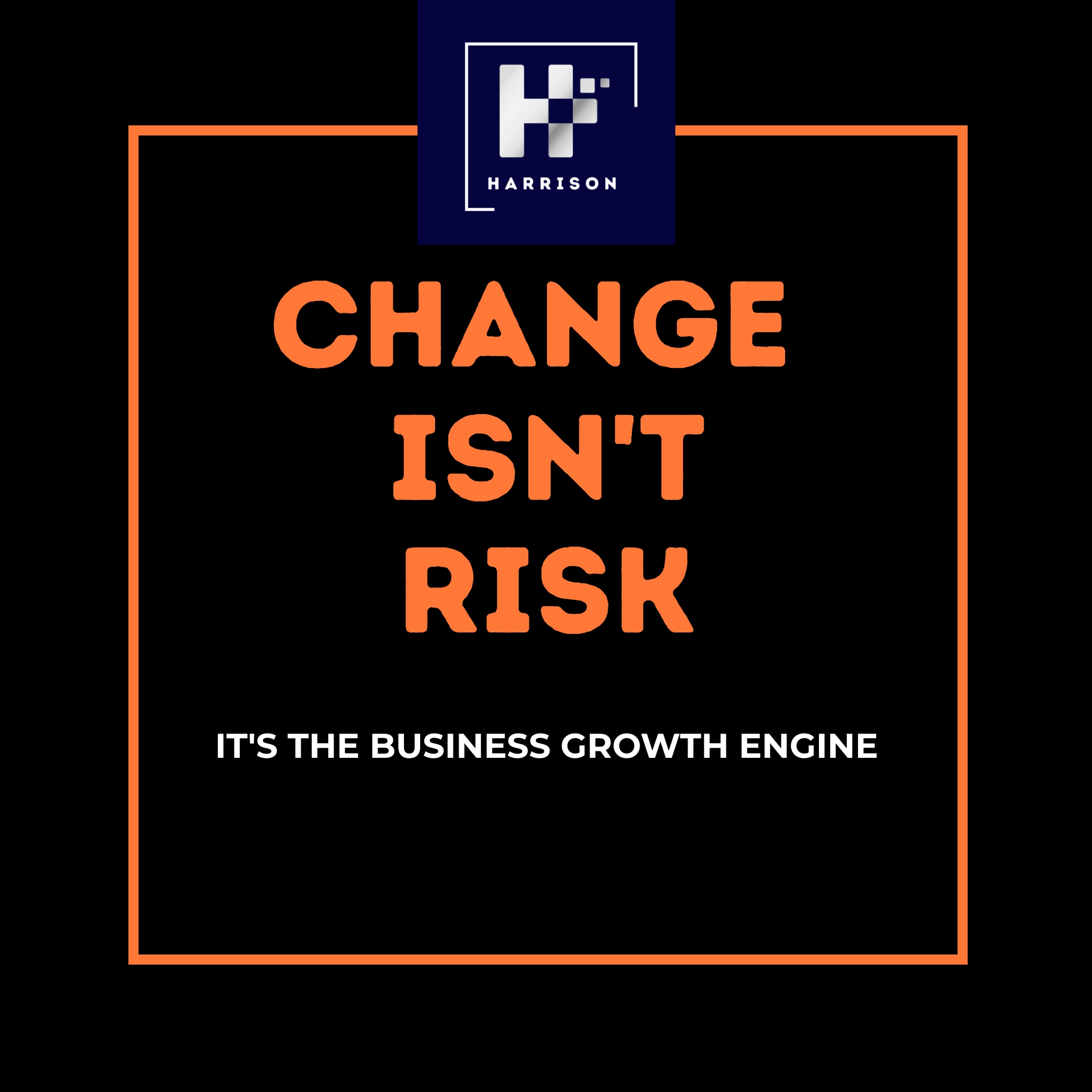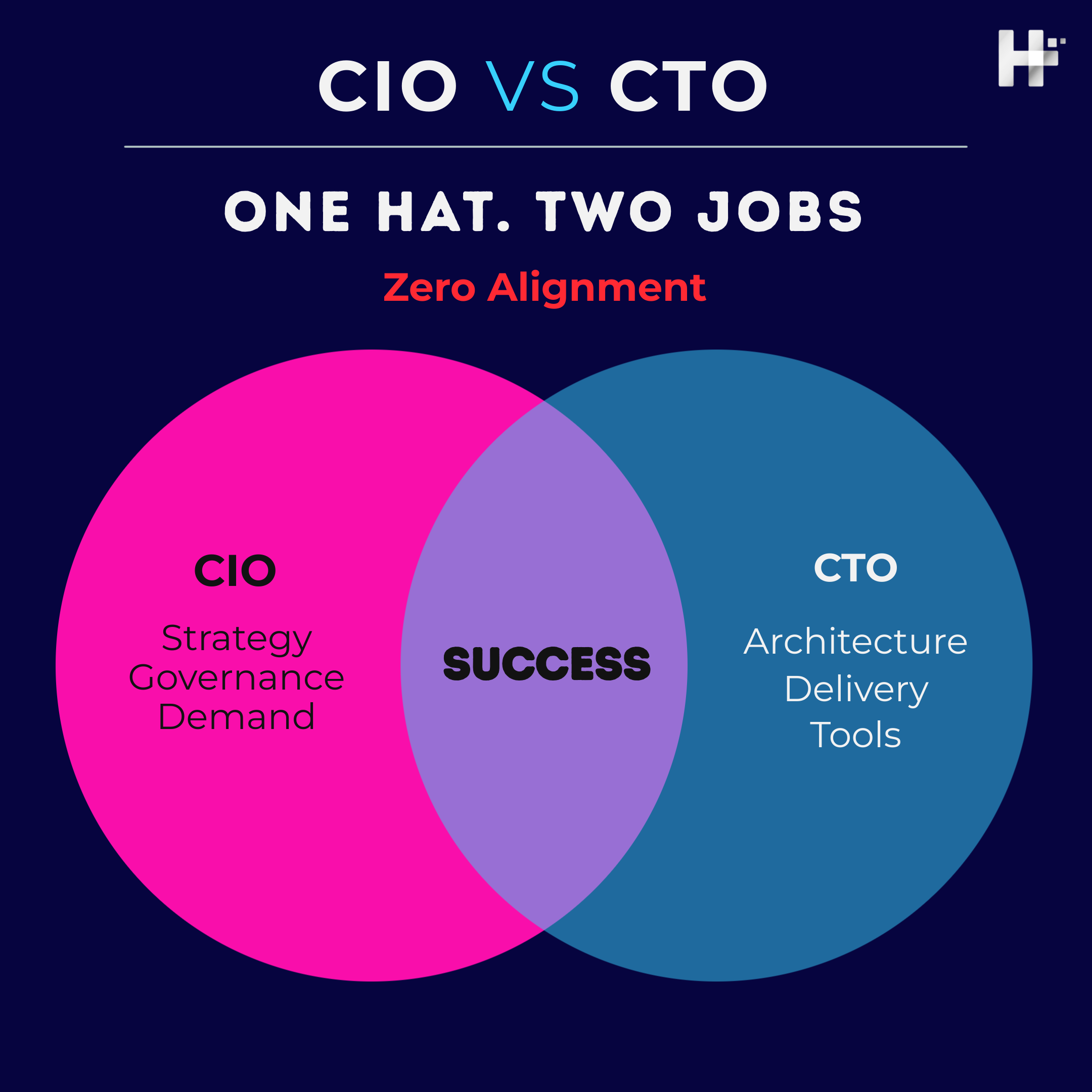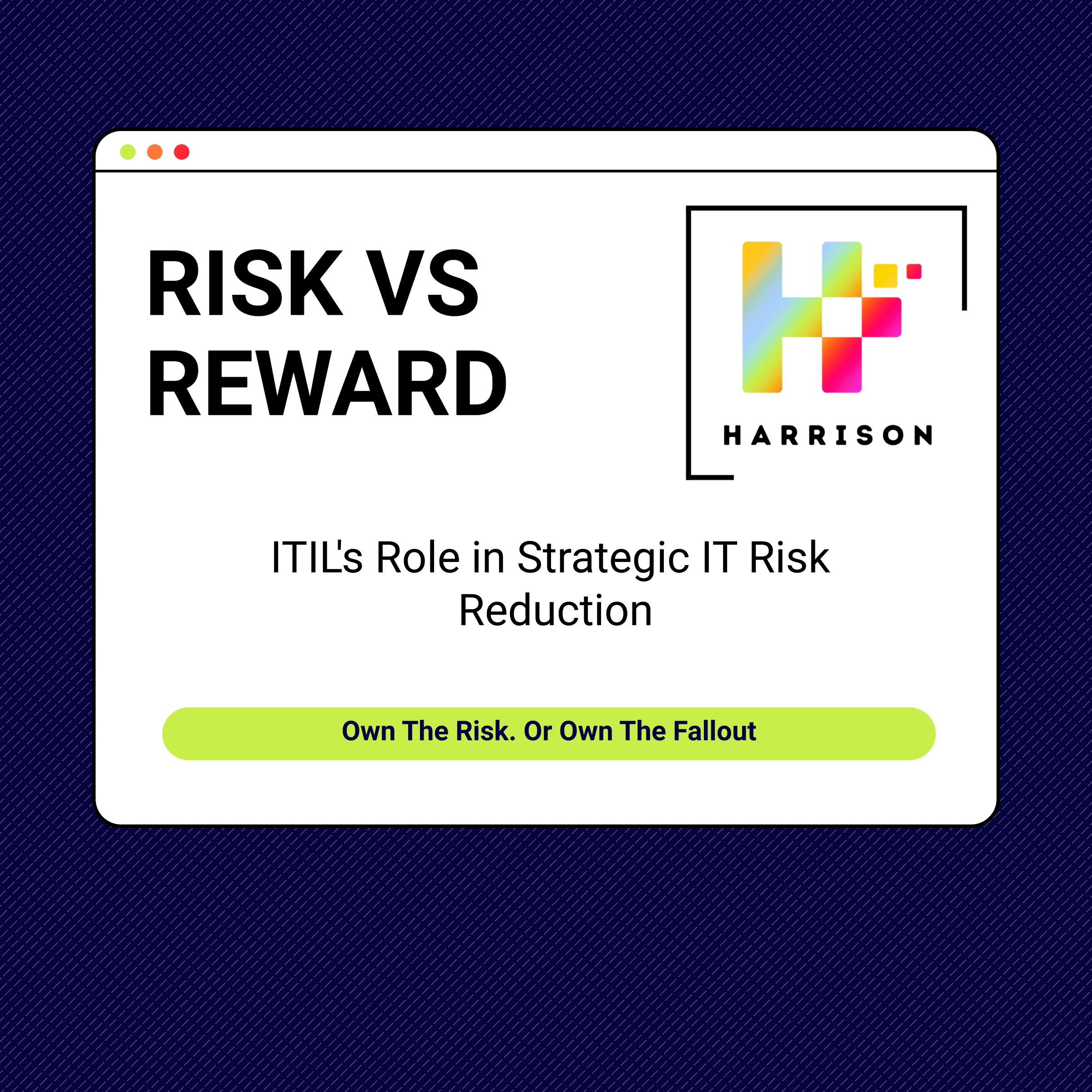Config Management – The One Everyone Seems Scared Of!
Configuration Management is like teenage sex, they all say they are doing it, everyone thinks everyone else is doing it, but the fact is, most of them are not! Let’s lift the lid on what it is and why so many organisations are almost scared to embrace it…
Introduction
Over the years we have been involved with a number of engagements where we have to sell and sometimes even push the client down the route of doing Configuration Management.
“We have a CMDB, of course we do configuration management”
This is a familiar statement we hear time and time again on client engagements and we have to explain that if I have a spanner in my hand, does that make me a plumber?
Configuration Management is the glue that brings IT Service and the Customer together.
Configuration Management – The Basics
Configuration Management is one of the most important Enterprise Capabilities in an IT Operating Model. It does not matter if you wear an ITIL v4, v3 or v2 hat! the criticality of understanding the knee bone connected to thigh bone service topology can’t be underestimated.
The Drive For Service
While IT is very product orientated now in the very cloud/agile/digital world, IT is still a service and the IT department is still a service provider.
Rather than thinking of IT as a pile of products that sit in the cloud (someone else’s DC) and bits of equipment, IT Services delivered to the Business or End User are a series of services carefully mapped to Business Requirements and even business processes.
When IT starts thinking about what it provides in the form of Services that are made up of products and other key ingredients, the magic starts to happen.
Benefits

Configuration Management – The Cement For the Building Blocks
Configuration Management is the cement that bonds good service into supporting
the business’s processes.
Supporting Business Processes
Business processes are an often overlooked element of Configuration Management. The neglect of business processes further develops the “us and them” division between IT and the business.
Inclusion of business processes ensures more business relevance to the Configuration Management and the result will help change the mentality from “us and them” to just “us”.
Configuration Management shouldn’t be seen in isolation.
- How do you know that you have delivered a good service to the business?
- Is your IT aligned to the business?
With the right IT Capabilities in place, IT departments can claim to be delivering near 100 percent customer satisfaction and in many cases they may achieve their goal.
Think about the watermelon SLA! Green on the outside, but Red on the inside. Is the customer really happy?
Meaningful satisfaction levels is only really tested by the input the business has in their review and implementation.
- When is the service good enough and how do you know you are delivering what the business needs?
- How are service improvements justified and can there truly be a collaborative approach between the business and IT?
- Is there a need for a common sense approach to meet organisational goals and objectives and what role do standards and best practice play in all of this?
The Triggers of Change
There are some common drivers that are influencing change within IT…..
- Cost – the cost vs quality ratio of IT is of ever-increasing scrutiny especially in the global recession facing us in 2023 and beyond. IT costs have continued rising faster than hardware and software investments over the past 10 years and a lot of this is down to the move to the cloud which moves the pendulum of IT spend from a CapEx to OpEx financial model.
- Efficiency – IT is constantly needing to be keep pace with the business and provide efficiency savings for them or IT themselves.
- Reaction to a significant business event – this could be a large scale outage that had financial or reputational impact, a large Software Vendor Audit which resulted in a hefty CPO (Compulsory Purchase Order) or maybe even a company IPO (Initial Public Offering) which has resulted in having to look investible to the market analysts.
The Importance of Design
Configuration Management has an intimate relationship with many and most of the IT Capabilities in your Operating Model. Therefore, incorrect or poorly manged service configuration data will result in the wrong decisions in service recovery, problem solving, capacity planning and even availability design which all is felt by the business who end up with either a poorer service or higher cost.
In our work with our customers, the top trends we have found that drive their appetite to deliver IT as a service provider are:
- Ability to assess the impact of service failure quickly
- Identify the components that make up a service so that Service Levels can be agreed with the business and in turn, through the IT providers supply chain
- Assess the impact of change in the production live environment
- Cost and charge IT services accurately
Configuration Management is the keystone in an IT Service providers ability in achieving them points.
Moving Beyond the CMDB to a CMS
Before we talk about why, lets look at the what…..
CMDB – A database used to store Configuration Records throughout their Lifecycle.
CMS – A set of tools and databases (i.e. CMDB) that are used to manage an IT Service Provider’s Configuration data. The CMS also includes information about Incidents, Problems, Known Errors, Changes and Releases; and may contain data about Employees, Suppliers, Locations, Business Units, Customers and Users.
The CMS includes tools for collecting, storing, managing, updating, and presenting data about all Configuration Items and their Relationships. The CMS is maintained by Configuration Management.
In other words, the CMDB is only a database and the CMS includes the tools and databases to manage the data. The CMS maintains one or more CMDBs, and the CMS is used by all IT Capabilities.
The CMS concept builds on top of the CMDB concept.
The rationale behind the CMS is that the CMDB, when used as a part of an overall system, goes beyond storing Configuration Items and actually supports the business strategy.
So the business value is not in a database of Configuration Items on its own, but rather in a system where the database of Configuration Items is considered with processes that leverage that data in support of the business.
The CMS is more than the CMDB and reflects the infusion of good IT Service Management (ITSM) practices. Relationships are at the heart of the CMS. The CMDB was often viewed as a repository of attributes. The CMS is a force to break this cycle by mandating the relationships necessary to make the raw data meaningful.

The Importance of Service
We have spoken about Configuration Management as a Capability that focuses on ensuring the support of a business service, and their requirements, design, and other pertinent information. But what is a service?
A service is as a means of delivering value to customers by facilitating an outcome that the customer wants to achieve without the ownership of specific costs and risks. But it is only classed as a service if the organisation deems it necessary to support the business.
Everything starts with service, whether you have paying customers or not.
Most organisations share similar services and then additional services usually
come based on your vertical. Defining your services however can be a challenge.
There are two approaches: top down and bottom up.
Top down means determining all of those business services you offer and then the items that support those services.
Bottom up means identifying all of your servers, databases, applications and build your business services based on these.
That means you are already starting to think about Configuration Management.
The CMDB offers significant benefits.
A CMDB facilitates impact analysis of proposed changes for better decisions. By establishing and using a single source for Configuration Management to manage critical system information, you align your organisation’s business and IT strategies, resulting in improved productivity and profitability.
Configuration Management – What Next?
Key Points to Remember
- You implement Configuration Management the Capability and not just a CMDB.
- Don’t just fill it up, think about what you need.
- Get a baseline. assess who is capturing what, how and why. then look at how accurate it is.
- Start with one thing – horizontal or vertical. so that means, either start with a business service and work downwards through the service topology or, start with a CI type or class and discover that across your service portfolio. There is no right or wrong route, it will be a question of how you are geared up and what you can get done.
- This is a capability and that means People, Process and Tools. Don’t just fill up a database (CMDB) with stuff and expect it to do it for you.
- Get the service governance in place first – Tie into Change Management so that CI’s are updated as they move through the CI lifecycle. Embed the Policies in places like Incident Management so that as a CI is swapped out Configuration Management’s CMS is updated to reflect the new Service Topology and CI states.
- Don’t rely on discovery to capture what has changed! Discovery should assist in the verification and audit of CI’s.
- Integrate, integrate and integrate! Other capabilities are only as strong as the CMS that supports it. How do we impact assess change? how do we know what to restore and in what order in the event of a disaster? how does Event Management corollate impacted services from unstable CI’s? the use cases are endless.
Ready?
- Measure twice, cut once – It took one client of ours over 18 months with a team of 8 to design, build, run and mature a Configuration Management Capability that met their goals.
- Iterative is best. incremental benefit is better than delayed perfection.
- If nobody needs the information, don’t track it. Less is more certainly to begin with!
- Make sure you have a process owner and a team to do the process churn.
- Assign owners to each Configuration Type who is responsible for keeping them up to date.
Don’t take your journey lightly. If you would like to talk to us about your upcoming journey or inflight pains we have described in our blog, get in contact!
Follow us
Latest articles
December 15, 2025
December 15, 2025
December 15, 2025
December 15, 2025
December 15, 2025
December 15, 2025









